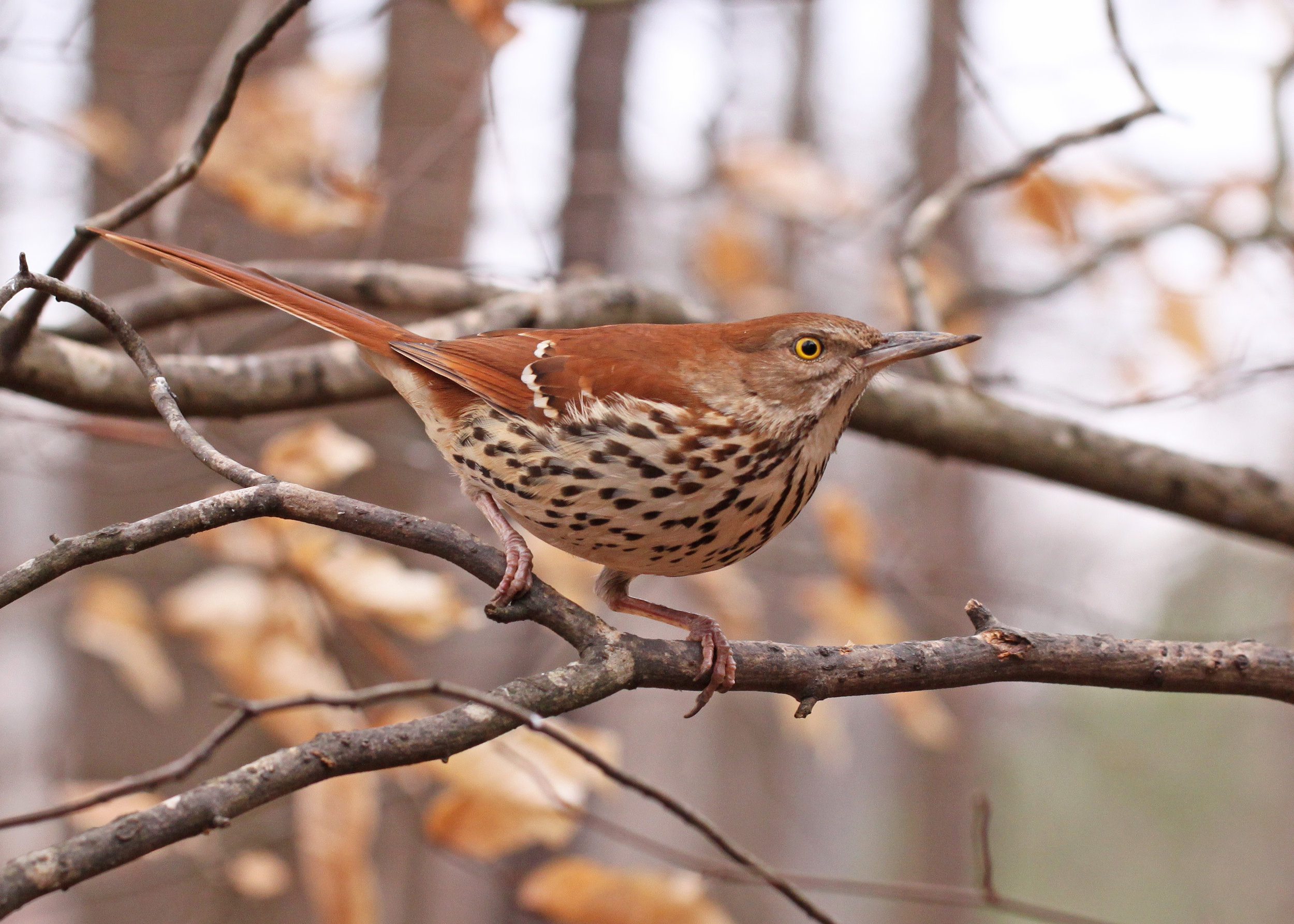The short-eared owl is one of our favorite grassland birds. In addition to the numerous snowy owl sightings this winter we have also enjoyed seeing short-eared owls on a number of days.
The short-eared owl and the Northern harrier occupy the same habitat, preferring large grasslands, especially habitat with short grass or alfalfa. Both are ground nesters and concentrate their hunting on areas with large numbers of small mammals, especially meadow voles.
Photo by Jim Stewart
In 1991 Sam Robbins wrote in Wisconsin Birdlife that short-eared owls are uncommon migrants and rare summer residents. Sam could only find 10 nesting records before 1972 when Fran Hamerstrom and her assistants (playfully called “gaboons” by Fran) located 17 nests on the Buena Vista State Wildlife Area north of Wisconsin Rapids.
In the first breeding bird atlas from 1995 – 2000 there were 14 nest records in six counties in central and northern Wisconsin including Crex Meadows in Burnett County. At the end of the third year (2017) of the WI Breeding Bird Atlas II there are only five confirmed nesting records, all at Buena Vista Marsh. Last year we had a short-eared owl hunting Browne and Jill’s Prairie in early May. Randy Hoffman also found a short-ear at Mud Lake State Wildlife Area east of Poynette last May. Unfortunately they did not stay in the area and nest.
With an increase in habitat we are seeing more short-eared owls in migration and in winter. This winter we have been seeing up to four short-eared owls, south of the intersection of Goose Pond Road and Highway K, hunting the pastures and alfalfa fields at the UW Agricultural Research Station. We also saw one on Badger Lane east of the UW Research Station headquarters, and three owls were found a number of days on Harvey Road south of Highway DM and one mile east of Highway 51.
Photo by Monica Hall
The best time of the day to find these owls is the “blue hour” when the animals of the night replace the animals of the day. However, on some days short-ears were seen hunting around mid afternoon. Wildlife photographer Monica Hall spends a lot of time searching for owls and has been rewarded in finding short-ears hunting with good light conditions. She uses her car as a blind and sometimes the owls have flown close to her or perched nearby.
Our best sighting this winter was on February 6th. In late afternoon we spotted a snowy owl on a utility pole on the west side of Highway I along the Wood Family Prairie. We then headed to the UW Farms looking for “Arlington” our snowy owl with a transmitter. While heading to Arlington’s usual roosting areas we were treated to two short-ears flying with their characteristic moth-like flight over the UW pasture and alfalfa fields south of Highway K.
Photo by Jim Stewart
We were unsuccessful in locating any more snowy owls and headed back to check on the snowy owl along Highway I. We drove past the Browne Prairie and were very surprised to see a short-eared owl in the parking lot sitting on the mailbox that holds a guest book for visitors. We had our camera ready and slowly backed up. Seconds before we were ready to take a photo, a snowy owl flew by and the short-ear flew toward the snowy owl. The snowy made a loop and landed on a pole across from the parking lot. Moments later the short-ear made a pass on the snowy; the snowy then flew away.
In early February, Spence Stehno was searching for owls at Buena Vista Marsh and reported to ebird “I saw one (short-ear) fluttering over the field, and then up it flew directly into the face of a snowy owl sitting on a telephone pole and started to dive-bomb the snowy. A few seconds later a second SEO joined the first and was doing the same thing to the snowy who at that point, other than flying off to a farther pole and landing, did not appear to offer any defense from the two SEO's. When flying the much larger size of the snowy to the SEO was obvious. SEO's 3 & 4 were now in the area, making the sweet sound of their bark and screech as they were flutter-flying around. There was definitely a different sound being made by the SEO's when they were coming near the snowy on the pole.” Our guess is that snowy owls may prey on short-eared owls if they are found sitting and not paying attention. So maybe short-eared owls will harass snowy owls to force them to move on from the area. In the air the short-ears probably can outmaneuver the snowies.
Photo of Mark with the short-eared owl we rescued. Photo by Sue Foote-Martin
In the past, we’ve had wonderful short-eared owl sightings in central South Dakota in mid-October. In some years we have seen 50 short eared owls in the Fort Pierre Grasslands and Conservation Reserve Program fields. Usually the short-ears are in groups and our record was flushing 10 at one time! One day we were driving around with Curt Caslavka and Chuck Pils when we found a short-eared owl caught on a barbed-wire fence. Lucky for the owl we came by. He was quickly released and flew off unphased.
We always wonder how these uncommon birds find the areas with large small mammal populations for nesting or hunting in migration. Owl searching requires luck. We recently went owl prowling with Jeff and Arlene Koziol. We knew of five snowy owls in the area and did not expect to see any short-ears since they have not been seen for 10 days. We ended up finding two short-ears and no snowy owls. Hopefully the snow will not get too deep for the short-eared owls to feed.
Written by Mark Martin and Sue Foote-Martin, Goose Pond Sanctuary Managers























